In the late 90s, it seemed like you couldn’t escape Hollywood’s fascination with Michael Crichton. While not the first adaptation of his writing, the obsessive author became a box office darling after the release of Stephen Spielberg’s version of his novel Jurassic Park. Amid this flurry of cinematic success, the world was introduced to The 13th Warrior. Plagued by production problems, and a truly brutal thrashing by critics, to this day it rarely gets the respect that it deserves. Here are some of the reasons The 13th Warrior is one of Michael Crichton’s greatest adaptations and a true forgotten classic.
The Journey of The 13th Warrior
Both the film and the novel it is based on merge two historically important texts, the Old English epic poem Beowulf and Ahmad ibn Fadlan’s real-life account of the Volga Vikings. We are first introduced to the protagonist Ahmad, a Muslim Arabian nobleman, exiled from his homeland. In his travels he encounters a group of nordic traders and, amid a particularly intense pagan ritual, is involuntarily recruited to go with them on a dangerous mission against an ancient enemy. Ahmad, who is neither a warrior nor an adventurer, is suddenly swept up in a world that he does not understand, fighting a foe that he isn’t even sure he believes exists.
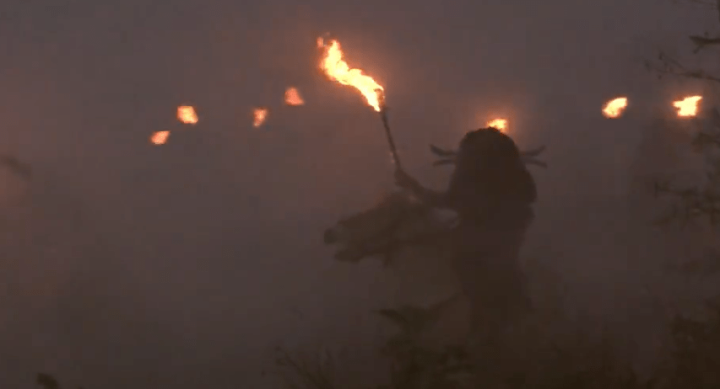
The 13th Warrior, 1999 © Buena Vista Pictures
Faithful to the Source
Today it can be difficult to separate the author, Michael Crichton, from the many films that bare his name. Whether it be a masterpiece of movie magic or a mangled cinematic mess, the film adaptations of Crichton’s novels have rarely stuck to the author’s vision.
The 13th Warrior is a notable exception to this unfortunate trend. The film is based on the novel Eaters Of the Dead. A novel that, according to his official website, Crighton admitted he wrote on a bet.
“The short version is, I wrote Eaters of the Dead on a bet that I could make an entertaining story out of Beowulf.”
Michael Crichton
Crichton was heavily involved in the project, even stepping in to direct when the studio became unhappy with the credited director John McTiernan. Though changes were definitely made, The 13th Warrior would become one of the truest adaptations of a Crighton novel. The author himself said this about the film:
“I’m quite pleased with the movie (13th Warrior), which I think captures the feeling of the novel very well.”
Michael Crichton
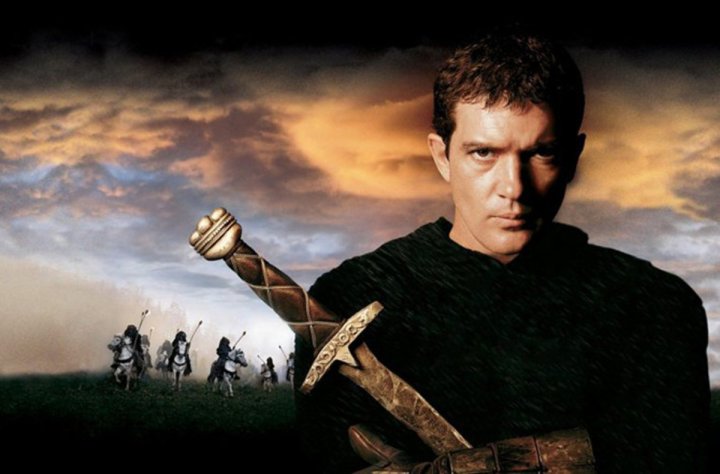
Faithful to History
The 13th Warrior, and its source material, sit solidly in the genre of historical fan fiction. It won’t be winning any historical accuracy awards, for many reasons. There are some points, however, where the film hit the nail on the proverbial head. In spite of some geographic and armament inaccuracies, to this day it is one of the most grounded and honest depictions of ancient Norse culture in mainstream cinema. Though the North Men are first depicted as violent and unclean, as the film goes on they are revealed to be intelligent and sophisticated. The filming location of British Columbia serves as an accurate substitute for the Scandinavian wilderness. Even seemingly inconsistent things, such as the strange mix of accents among the North Men, would have been accurate to the time due to the advanced trade and travel networks that the Nordic people had established.
Immigrant Story
One of the greatest strengths of The 13th Warrior is its insight into the immigrant story. The movie flips this relatively common trope on its head. We see a reluctant traveler forced to adapt to a completely foreign culture or die.
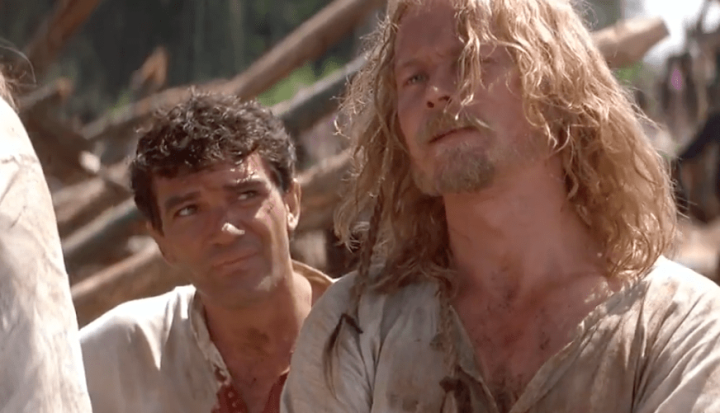
The 13th Warrior, 1999 © Buena Vista Pictures
When we are introduced to Ahmad, we see him as a noble and refined character. The North Men, on the other hand, are introduced as vulgar, unclean, violent, and uncivilized barbarians. As he is forced to travel with them he must learn their language, their faith, and their warrior’s code. Ultimately their bravery, cunning, and honor shine through. We can literally see his transformation as he sheds his traditional Arabic robes along with his preconceived notions. Eventually, Ahmad is able to put aside his prejudices and stand beside his new comrades in battle, proud to be counted among them.
Learning the Language
One of the more interesting cultural moments in The 13th Warrior occurs early in the film. Our reluctant hero Ahmad has been pulled along on a dangerous journey with the brutish North Men without any means to communicate. Though their speech is foreign to him, over time he is able to acquire enough of the nordic language (in this case Norwegian) to hold a conversation.
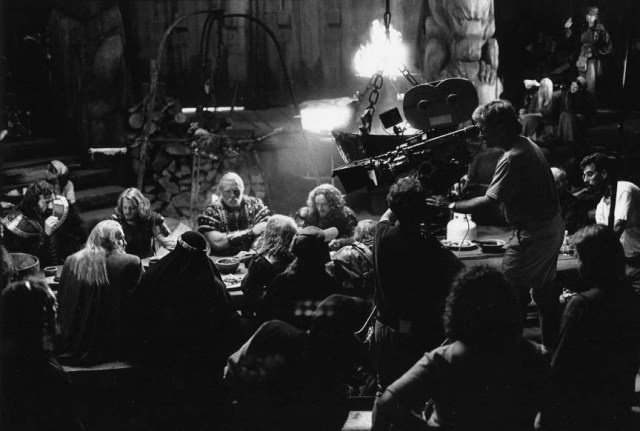
The 13th Warrior, 1999 © Buena Vista Pictures
The way that acclaimed director John McTiernan chose to depict this transition in The 13th Warrior is brilliant, if flawed. As the journey goes we are shown a series of spirited conversations between various North Men. First, these exchanges are all in Norwegian, then bits of English (substituting for Arabic) are interspersed into some sentences. Shots are repeated with closeups on the North Men’s mouths to represent Ahmad’s focus on observing their speech. We get to learn with Ahmad. The only flaw in this depiction is that, though the journey would have taken months, the film makes it look like only a few days pass. Professor Michael Livingston of The Citadel in Charleston, SC says this about The 13th Warrior‘s representation of immersion learning:
“Some reviewers gripe about this sequence, complaining that you can’t learn a language so quickly. To that, I say that no, apparently ‘you’ can’t. But some folks over the course of a week of immersion really can pick up more than enough to get by.”
Prof. Michael Livingston
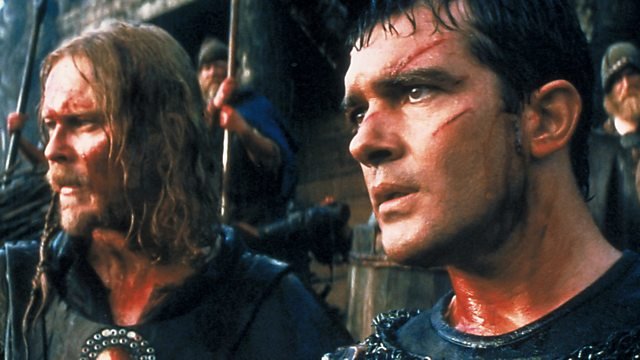
The Critical Response
There is no getting around it, The 13th Warrior was a phenomenal flop at the box office. Aside from budget overruns and delays, It was absolutely trashed by critics at the time, many complaining about the level of violence (ironic, as The 13th Warrior would be considered rather tame by today’s standards). Roger Ebert gave it 1.5 stars and complained:
“It’s a little unsettling to sit through nonstop slaughter and then witness a pious conclusion”
Roger Ebert
Variety called the film:
“A bloody but anemic story of he-men with broad swords and long ships”
Todd McCarthy
Not everyone despised the film. There were the occasional less than horrible write-ups, like this from The Washington post:
“The summer’s primo guilty pleasure… red meat for the soul”
Stephen Hunter
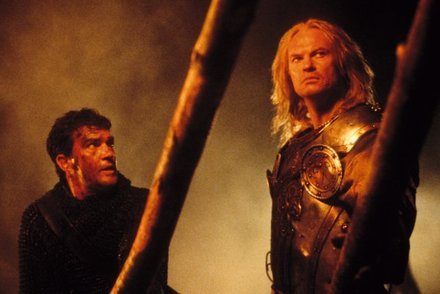
90s Problems
Even I won’t claim that The 13th Warrior is a perfect film. No, Antonio Banderas is not Arab. It suffers from a sometimes painful case if 90s cinematography. In the time of “Me Too” and “representation matters”, it is definitely worth noting the distinct lack of any meaningful female presence. Possibly due to the budget and directorial complications, the film does seem to speed through some major plot points and could probably have used another hour or so to flesh out the details (especially in the beginning).
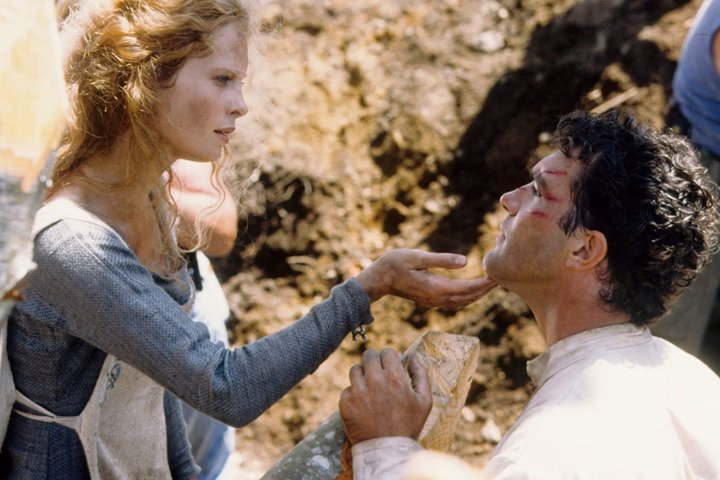
The 13th Warrior has been abandoned by its studio, forgotten by the public, and beaten to a bloody pulp by its detractors. Despite this, should you be able to seek this film out, you will find something very special. Even with all of its flaws, The 13th Warrior remains a guilty pleasure, a criminally underrated gem, and for a select few, a truly forgotten classic.

Do you secretly love The 13th Warior?
Find more hidden gems and well known classics from this and other ScreenHub authors!
‘Terminator: Salvation’ is Better Than You Remember – ScreenHub Entertainment
The Unsung Classic: ‘The Mummy’ – ScreenHub Entertainment
‘The Last Kingdom’ Season 3 Review – ScreenHub Entertainment

Yes, I love this book and movie.
LikeLiked by 1 person
10/10. A fantastic flic that will outlive us all.
LikeLike
-It’s always mystified me that this film was talked down. I very much understand it flopping commercially given the behind-the-scenes mess – Hollywood will sometimes create a self fulfilling prophecy, causing an otherwise good film to fail because it has already decided it is going to fail (cough The Rocketeer cough) – but it’s a fun movie.
-The trailer shockingly nails the movie on the head and makes it look as good as I found it to be when I saw it (and any time I’ve seen it since). Most 1990s trailers make me laugh for various reasons, but that one actually feels like it does the trick.
-I have to firmly disagree that there is any problem with this film when it comes to female representation. Hollywood has come a long way with representation in general, but its biggest growing pain (reflected in society in general) is that our efforts to make sure nobody is discriminated against (a good thing!) inevitably leads at times to forced representation that makes no sense. Be it Beowulf or a medieval-era adventure of a band of warriors, this is a tale that is meant to be mostly or entirely masculine, and the film executing it that way makes sense. In fact, my favorite Hollywood subversion of practices at the time is that there is a perfect setup for an unnecessarily-lengthy and distracting romance, and this film offers only a glimpse of a much more real one. It helps that the female character in this case comes across as organically and authentically respectable; she is no damsel in distress, but that doesn’t mean she has to have this told explicitly by having her go “warrior princess” in a way that would have resonated badly (which is the current Hollywood trend…a good female warrior in a movie is terrific, as long as going that route isn’t forced).
-Following up on the prior item, we could look at The 13th Warrior as refreshingly post-modern, if “modern” is circa 2020. Some roll their eyes about the casting of Banderas as an Arab character, but that’s the thing…whereas Hollywood of old would cast “white” actors for almost everything, and Hollywood of today insists that everyone be played by someone of matching “type” (even though acting by definition is about a person playing beyond type…otherwise, we wouldn’t get to make any stories about Norsemen, warriors, etc.), Hollywood one day will do what the best filmmakers have focused on: casting the best darn fit for the role, type be darned. In that regard, casting Banderas at the height of his considerably-charismatic powers as an outsider of different appearance and voice, while not actually “Arab”, still achieved precisely the effect that the story aims for. Any issue with the casting of Banderas here serves as a commentary on how we’re presently missing the woods for the trees when it comes to representation in film.
-I’ve seen that “learning the language” scene harshly criticized before, and it blows my mind. Maybe picking up on the passage of time (pretty clearly implied by the change in background scenery shot to shot in that sequence) is important to drive suspension of disbelief, but then again I picked up on that as a 13 year old when I first saw it. Did some viewers miss the clear introduction of Banderas’s character as a man of prodigious learning? It isn’t hard to guess that he already knew a half-dozen or more languages and thus was well-versed in picking up new ones.
-I just read another retrospective review of the film that generally praised the action and fun of the film while heavily criticizing the story told between action scenes. It took issue with not understanding who various characters are, what they want, etc. Is that a problem for the rest of you? Because I didn’t struggle to follow any of that in the film, and the goals and motivations of characters always struck me as readily apparent. I agree that much is implied instead of explicitly delivered over exposition, but doesn’t that live up to the adage “show, don’t tell?” What’s wrong with, for example, a subplot of a background play on the throne that doesn’t get a lot of screentime? It receives initial hints, and then in one scene both comes to a head and is resolved. Do subplots need to linger over an extended portion of a film’s run-time? Last I checked, the source material’s form as a work of “travel writing” lends itself to tell a handful of short, episodic mini-stories weaved in as appropriate around the film’s primary plot, and I don’t know why keeping some of them basic and absent great detail is so necessarily unsatisfying. But…that’s just me!
LikeLike
Loved it, but…lot of film on the cutting room floor. The evil prince… his henchman loses his head…then he and his cohorts stomp off… never to be seen again. Quo Vadis? Team commander’s back story… (his father a carpenter…?) Director’s cut unlikely to be seen…even if cut material wasn’t criminally discarded. Yankee Papa
LikeLike
The 13th Warrior COULD have been a masterpiece !!! Release the Directors cut Disney!
LikeLike
Seriously!!
LikeLike